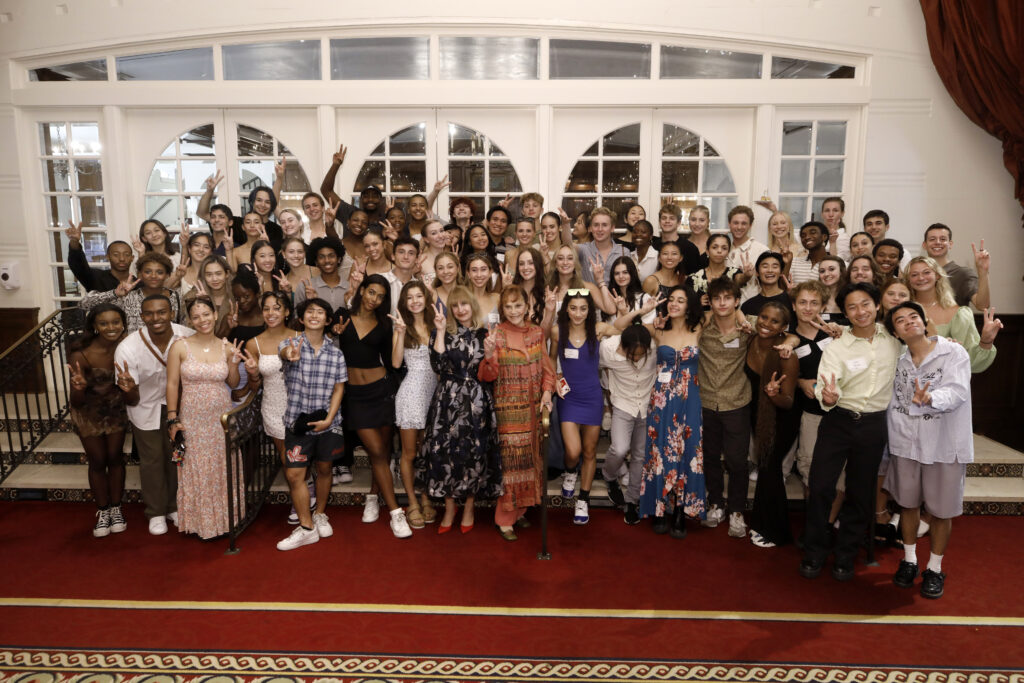
Julia Ritter’s dance journey began like many others, in a creative movement class at the age of 5. “A preschool teacher told my mom that I had good rhythm and lots of energy, so dance would be a good way to channel all of that,” she recalls. It turns out that over the years, that energy would be channeled not only in the dance studio but in many different arenas: running her own company, The Performance Group, a troupe of contemporary-trained dancers, singers, and actors who created original productions; receiving three Fulbright scholar awards for her choreographic research in Europe; and serving as professor of dance at Rutgers University, where she was also department chair for over a decade. Now Dr. Ritter brings more than 20 years of experience in higher education to her new role as dean of the Glorya Kaufman School of Dance at the University of Southern California.
Dance Teacher chatted with Dr. Ritter about her experience since joining USC in July 2022, the people who inspired her down the scholarly path in dance, and the importance of bridging diversity, equity, and inclusion with overall dancer wellness.
What inspired you to pursue academia?
When I did my graduate work in dance at Temple University, I had the opportunity to study with Brenda Dixon-Gottschild, who was also one of my advisors for my master’s thesis. Brenda was such an incredible role model for me on how you could do both the artistic and the scholarly. She is an artist who also wrote amazing books about African aesthetics and dove into what Black dance means to American culture. After I had been choreographing for my company and won awards, I decided that I wanted to research in a different way. So I was accepted into the PhD program in dance at Texas Woman’s University, where I completed my studies in 2016.

Have there been other people in dance education that have inspired you?
In terms of leadership, Dr. Penelope Hanstein was also a role model for me. She was the chair of the Texas Woman’s University dance program for many years and spearheaded the first low-residential PhD dance program in the U.S. She also served as head of the National Association of Schools of Dance Commission on Accreditation. Getting to know her opened me up to an even larger realm of arts administration.
What’s been the best part of your experience working at USC Kaufman so far?
The people, of course. It is an extremely competitive program, so the students come in with incredible skills and are very exciting to be around. We have one of the most extraordinary faculty around, particularly in the realms of hip-hop studies and dance and technology. I would also say our staff are some of the best in the business in terms of their understanding of producing, advocating, and communicating about dance.

You’ve been in higher education for more than 20 years now. What has been the biggest challenge for you working with today’s generation, and how do you navigate that?
Young students want to do it all—be artists, entrepreneurs, influencers, and also save the world! How do you help young people maximize their talents and skills with the time that they have at the university? What I’ve found is one of the biggest challenges is making sure you have a team around you, “service providers” in a way, to support the students in everything that they want to do. So that’s having a team of wonderful advisors who really know the university and can help students navigate what they want to pursue, and a strong wellness staff to help them manage the rigor of doing a dance program within higher education, since they aren’t just at a conservatory; one-third of their degree here is liberal arts studies. And then supporting the faculty so that they can give the students the best educational experience possible. As an administrator, that has been the biggest challenge—to make sure everyone has what they need to do their best work.
Can you tell us about your book, Tandem Dances: Choreographing Immersive Performance, which was released in 2021?
The book was an outgrowth of my dissertation, looking at audience participation in new models of performance. It is an examination of how choreography works as a tool for organizing audiences in immersive performance, and I look at three groups in particular: a company in Brooklyn called Third Rail Projects, bluemouth inc. from Toronto, and Punchdrunk, creator of the popular Sleep No More, based in the U.K.
What message do you have for today’s dance educators who are continuously working to inspire and empower the next generation?
We’ve been hearing about DEI and the need to look at dance through that lens. What I would say, because it is something we are starting to do at Kaufman, is to try to merge DEI with the wellness components of dance, because they aren’t really separable. When there are challenges in the realm of DEI, we also have to think about how those concerns affect students’ wellness, particularly mentally. We need to understand how we as educators can keep those two things really at the forefront of our minds: DEI and wellness.





